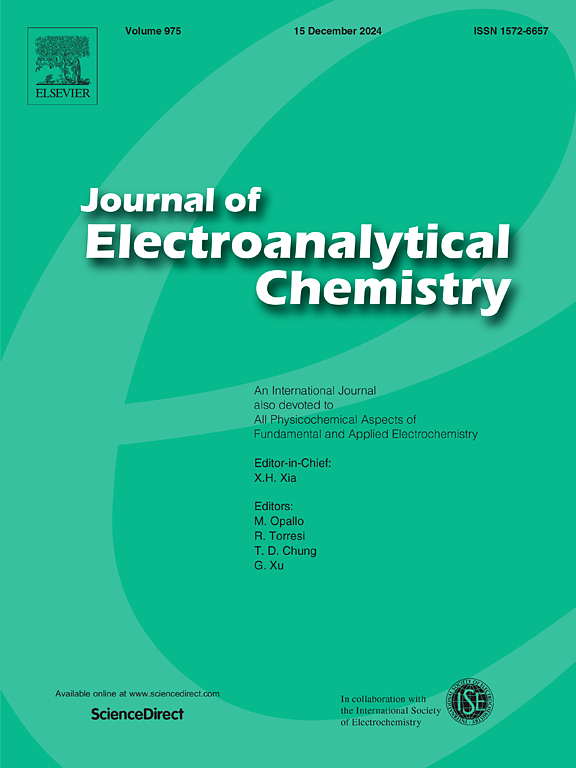High-performance aqueous zinc-ion batteries enabled by graphene electrode modified with multiple redox polymer
IF 4.1
3区 化学
Q1 CHEMISTRY, ANALYTICAL
引用次数: 0
Abstract
In this work, a novel conductive polymer material—polyaminohydroquinone dimethylether (polyAHQDME)—was in-situ synthesized and grafted onto reduced graphene oxide (rGO) to yield polyAHQDME-rGO composite electrode for aqueous zinc-ion batteries (AZIBs). Various characterization techniques, including scanning electron microscopy, Fourier-transform infrared spectroscopy, X-ray diffraction, thermogravimetric analysis, and Raman spectroscopy, were employed to collect the structural and morphological information. Due to redox reactions between quinone and imine transformation, electrochemical test demonstrated that polyAHQDME-rGO electrode achieved a high capacity of up to 242.8 mAh/g at 0.2 A/g, and maintained excellent stability at high current densities. Meanwhile, polyAHQDME-rGO material exhibited rate capability and cycling stability. Electrochemical impedance spectroscopy showed conductive polyAHQDME chain favored electron migration and zinc ion transfer. This study provided new insights and tactics for developing high-performance cathode materials for aqueous zinc-ion batteries.

求助全文
约1分钟内获得全文
求助全文
来源期刊
CiteScore
7.80
自引率
6.70%
发文量
912
审稿时长
2.4 months
期刊介绍:
The Journal of Electroanalytical Chemistry is the foremost international journal devoted to the interdisciplinary subject of electrochemistry in all its aspects, theoretical as well as applied.
Electrochemistry is a wide ranging area that is in a state of continuous evolution. Rather than compiling a long list of topics covered by the Journal, the editors would like to draw particular attention to the key issues of novelty, topicality and quality. Papers should present new and interesting electrochemical science in a way that is accessible to the reader. The presentation and discussion should be at a level that is consistent with the international status of the Journal. Reports describing the application of well-established techniques to problems that are essentially technical will not be accepted. Similarly, papers that report observations but fail to provide adequate interpretation will be rejected by the Editors. Papers dealing with technical electrochemistry should be submitted to other specialist journals unless the authors can show that their work provides substantially new insights into electrochemical processes.

 求助内容:
求助内容: 应助结果提醒方式:
应助结果提醒方式:


